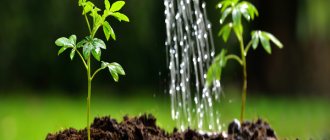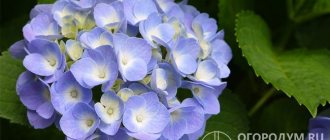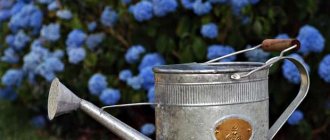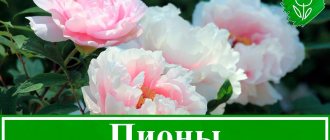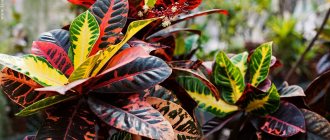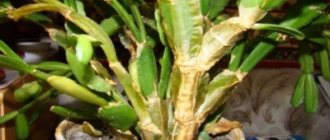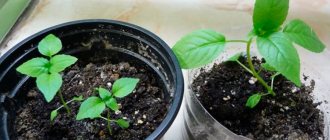Rhododendron (Rhododendron) is a large genus of evergreen, semi-deciduous and deciduous shrubs or small trees, including about 600 species. The plant belongs to the Heather family, whose representatives enter into symbiosis with fungi and form mycorrhiza, which allows living organisms to exchange nutrients. This does not mean that fertilizers for rhododendrons are not needed. You just need to take into account the association of the crop with mushrooms, and in no case allow an excess of elements or alkalization of the soil.
The benefits of feeding and signs of nutritional deficiency
There are many varieties of rhododendrons. Some bloom for a short time, while others, with proper care and feeding, delight with lush color from mid-May.
In summer, plants especially need nutrients. Their presence promotes the active growth of green mass and the formation of buds. In spring, rhododendrons need nitrogen, in summer and autumn - phosphorus, potassium and sodium.
The use of complex formulations is allowed, but a greater effect is achieved when preparing nutrient mixtures from potassium nitrate, phosphate or sulfate, calcium sulfate, ammonium sulfate or magnesium. They have a mild acidifying effect and have a long-lasting effect.
Based on the characteristics of the soil and the specifics of feeding schemes, rhododendrons may experience a pronounced deficiency of a particular mineral or may develop a disease from an excess of nutrients.
Determining what elements plants lack is determined by their appearance and growth characteristics.
- A change in shade at the edges of leaf blades and loss of shine indicates a lack of potassium.
- A lack of nitrogen is expressed in the dull color of rhododendron foliage. The foliage begins to turn yellow in the spring.
- Slow growth of green mass and weak budding followed by fading of color indicate prolonged phosphorus and potassium starvation.
- Persistent yellowness of leaf blades with no response to fertilizing indicates an excess of aluminum ions in the soil. The problem is solved by watering the iron chelate solution.
The deficiency of mineral substances in the soil should be eliminated, regardless of the period in which the problem was discovered. Insufficient nutrition after the end of the decorative period of the bushes leads to the laying of a small number of flower stalks for the next season.
Basic feeding rules
How to feed roses for lush flowering
Rational feeding of rhododendrons has some features:
- young plants are fertilized only with liquid or diluted products;
- when fertilizing, you should strictly adhere to the instructions indicated on the fertilizer packaging;
- It is prohibited to use fertilizers containing lime or chlorine to feed rhododendron;
- Rhododendron fertilizer containing phosphorus is beneficial for the plant, but too much of it can lead to chlorosis.
Important! Before feeding the plant, it needs to be watered.
Recommendations from experts
Rhododendrons are very demanding to care for. For good health and lush flowering of plants, it is important to follow a number of rules for care and feeding.
- Choice of fertilizers. It is recommended to feed young bushes with fertilizers in liquid form. Solutions are better absorbed by the root system.
- Manufacturer's choice. Experts do not recommend using imported granular fertilizers. They contain nutrients designed for plant varieties growing in other climates. The use of imported compounds often leads to the fact that rhododendron will begin to grow shoots in August and will not have time to prepare for frost.
- Wood ash. The use of ash leads to changes in soil acidity and the occurrence of chlorosis in plants.
- Excess phosphorus. Excessive phosphorus content in the soil leads to poor absorption of iron. As a result of its deficiency, plants develop chlorosis. Young seedlings are most susceptible to the disease.
In addition to general tips, it is important to know the most common mistakes that gardeners encounter and their consequences.
- Nutrient overdose. Rhododendrons do not respond well to over-fertilization. As a result of “overfeeding,” the flower mass decreases and diseases occur. If the situation is not corrected, the bush may die.
- Wrong choice of fertilizers. The use of fertilizers that reduce soil acidity has a negative effect on the development of bushes. The condition of rhododendrons is also negatively affected by the application of fertilizers containing inappropriate proportions of microelements.
- Spraying. During the flowering period, it is not recommended to spray the bushes. It leads to darkening of flower stalks and shedding of buds.
- Feeding during the flowering period. During the flowering period, the bushes are not fed. Fertilizing during this period leads to the dropping of flowers.
- Choosing the time and weather conditions for fertilizing. It is not recommended to fertilize plants in hot or dry weather. The scorching sun in combination with fertilizing leads to burns of young stems and leaf blades.
Feeding should be done in the morning or evening. It is optimal to choose days before rain.
Knowledge of the intricacies of organizing the nutrition of evergreen shrubs allows you to achieve maximum decorativeness from them.
Step-by-step instructions for depositing funds
The fertilizer complex is designed for long-term action and fully provides the azalea with all the necessary components.
Pokon
Long lasting fertilizer. Developed specifically for rhododendrons and includes all essential nutrients and trace elements. Available in granule form.
Composition of the drug:
- nitrogen (N) -19%, phosphorus (P) -5%, potassium (K) -23%;
- magnesium (MgO)-2%;
- sulfur oxide (SO3) -12%.
Application : Scatter the granules around the plant in the spring or when planting and dig in carefully without damaging the roots. Consumption – 10-30 g per plant, depending on its size. It is necessary to regularly water the bush to gradually dissolve the fertilizer. The big advantage is that a single application to the soil provides nutrition to the plant for 6-7 months.
Bona Forte
Complex fertilizer in liquid form. Contains all the substances necessary for azaleas, providing nutrition and strengthening the immune system of the bush. The content of microelements in chelated form promotes their absorption in full.
Composition of the drug:
- nitrogen (N)-9%, phosphorus (P2O5)-5%, potassium (K2O)-6%;
- magnesium (MgO)-1%;
- trace elements: boron, iron, manganese, zinc, copper, molybdenum, cobalt;
- vitamins B1, PP, C;
- succinic acid.
Application: Using root fertilizers together with spraying the leaves gives the best results. For irrigation, dilute 10 ml of solution in 3 liters of water, for spraying - 5 ml per 3 liters.
Fertilizing indoor azaleas:
- March-October: 1 time per week.
- November-February: 1 time per month.
Feed transplanted plants no earlier than after 10-15 days!
Can manure be used?
When planting, mix 1 part of cow dung or humus with 10 parts of soil. In the process of the beginning of the formation of buds, carry out a second feeding with the addition of phosphorus-potassium fertilizer.
succinic acid
A product of amber processing is an organic growth stimulant. It cannot replace fertilizers, but its use reduces the risk of diseases, accelerates the development of azaleas, and prolongs flowering.
Application: dissolve 1 g of succinic acid in 10 liters of water. The solution can be used for watering and spraying plants no more than once every 3-4 weeks.
Site selection and soil preparation
Rhododendrons prefer fertile, loose soils with high acidity and good oxygen penetration. If you plant a plant in an alkaline environment, the seedling will not survive or will often get sick and develop poorly.
The best combination for planting is a mixture of peat with coniferous decline and leaf soil, taken in a ratio of 2:1:3. Another successful combination is a mixture of peat and pine sludge in equal quantities.
Thanks to the introduction of sphagnum moss, ammonium, potassium sulfate and other types of acidic fertilizers, specialists maintain the necessary soil environment.
When planting bushes for the first time, the soil requires preliminary preparation. The site is dug up with heather soil, garden soil and river sand, taken in equal parts. For fertility and maintaining the desired pH, mullein, droppings, and pine pulp are added. The components are used in equal proportions. For additional feeding, the drug Kemira Universal is applied.
On clay soil, add a drainage cushion under rhododendrons. In the case of close proximity to groundwater, artificial hills are arranged for plants. This allows you to avoid flooding in March-April.
First feeding of young shrubs
Rhododendron breeder Holger Hachmann believes that young shrubs should be fertilized in early spring next year, regardless of the planting season.
Caring for rhododendrons in spring and feeding them is quite simple. If the plant has a height of about 30-60 centimeters, then long-acting preparations with a total mass of 40-60 g/sq.m. will be needed for fertilizer. Also, for an effective result in spring fertilizing of rhododendrons, you can add 30 g/sq.m. horn shavings. According to the method, the first fertilizing of rhododendron is similar to the first fertilizing of freshly planted hydrangea.
Types of fertilizers
Fertilizers for rhododendrons are chosen mineral or organic, which help reduce soil acidity. Nitrogen promotes the active growth of green mass, phosphorus and potassium are responsible for the formation of inflorescences.
Mineral complexes
Mineral complexes are presented in a wide range. Their advantage lies in their ease of use and the ability to add specific elements depending on the needs of the plants.
Modern mineral compositions include elements for soil acidification. This eliminates the need for gardeners to take additional measures to maintain soil pH.
Mineral complexes are used only according to the instructions and the recommended application schedule. Overfeeding plants can lead to their death.
Of the mineral compositions, the following showed high efficiency:
- Iron chelate (effective on clay soils);
- Nitrogen-containing compounds;
- Potassium sulfate, magnesium, ammonium (they acidify the soil well).
Rhododendrons respond well to feeding with potassium sulfate, calcium, magnesium and ammonium. Experts also use potassium nitrate, potassium phosphate and superphosphate. Effective feeding methods include a solution of potassium and phosphorus. For preparation, 8 grams of potassium phosphate and potassium nitrate are taken per 10 liters of water. Of the ready-made complex formulations, Kemira-M has performed well.
Organic compounds
In fertile, well-drained areas, you can do without applying mineral fertilizers. Organic matter is suitable for feeding. The best option is to mulch the tree trunk circle. The thickness of the surface layer is up to 8 centimeters. This method allows you not only to maintain the desired pH of the soil, add nutrients, but also to prevent the germination of weeds.
For mulching, use materials taken only from healthy trees.
- Pine needles. Shredded pine needles are the best option for mulching. It is taken or purchased in pine nurseries.
- Bark of gymnosperms. The best option is pine bark. To prepare the shavings, use fresh bark, crushed on a special grinder.
- Peat crumbs, grass, foliage. These materials are also used to mulch bushes. When using foliage and grass, it is important to ensure that it is not taken from diseased trees and that it is free of pests.
When decomposed, mulch releases the entire range of nutrients to the soil and serves as a good acidifier. But its effect is limited in time. It is recommended to change the mulch layer every 2-3 months.
If manure or slurry with the addition of superphosphate is used, then it is necessary to additionally check the acidity of the soil and promptly apply pH-lowering preparations.
Among organic materials, horn waste is highly valued. They contain large amounts of phosphorus and nitrogen.
Types of funds, their composition
Based on their origin, fertilizers are divided into the following.
Mineral
Simple
Increases the level of nitrogen (N), potassium (K) and phosphorus (P) in the soil:
- Nitrogen fertilizers promote the growth of branches and the development of foliage. The best choice for feeding azaleas would be Urea (carbamide). Contains 40-50% nitrogen, is highly soluble in water and contributes to soil acidification.
- Phosphorus fertilizers regulate plant metabolic processes and are a source of energy.
In acidic soil they become difficult for plants to reach, but do not affect the acidity of the soil. An effective supplier of phosphorus for azaleas is Phosphorite flour with a phosphorus content of 20-30%. When applied to the soil before planting and under the influence of soil acidity, it becomes accessible to azaleas and acts for several years. In the future, flour can be added to compost. - Potassium fertilizers increase resistance to diseases. Potassium sulfate contains 50% potassium and no chlorine, making it most suitable for azaleas. It is used both as a main and auxiliary fertilizer.
After flowering ends, nitrogen-containing fertilizers are applied; before buds appear and before flowering ends, fertilizers containing phosphorus and calcium are applied.
Complex
They are the most effective and easy to use, as they contain several nutrients. They are based on nitrogen, phosphorus and potassium compounds, magnesium salts, sulfur and a complex of trace elements. For example, Ammophos contains nitrogen and phosphorus, and Nitrophoska contains all three elements in correctly selected proportions.
Mineral fertilizers with a high content of sulfur and ammonium acidify the soil . Adding 30% ammonium sulfate to any complete mineral fertilizer forms an excellent fertilizer for azaleas. The preparation “Azalea” was specially developed as a ready-made complex fertilizer.
Do not use fertilizers containing chlorine!
Organic
- Cow dung .
0.5 kg must be filled with 5 liters of water and left for 3 days for fermentation. Then dilute 0.5 liters with 10 liters of water and water the plant. Pig and horse manure, as well as chicken manure, are not suitable for azaleas, as they increase the alkalinity of the soil. - Compost made from rotted grass and pine needles.
- Acidified water. Dissolve 1-2 tablespoons of citric acid in 10 liters of warm water. Use to increase acidity.
- Black tea . Its leaves contain calcium, magnesium, potassium, iron and other elements that help the development of the azalea's root system and promote its flowering. Pour 3 tablespoons of tea into 0.5 liters of boiling water. After cooling, drain. Dry the leaves and mix with soil when planting the plant (how to plant and replant an azalea?).
Before feeding the plant, it must be watered well.
Fertilizers stimulating growth and flowering
Stimulants are a separate category. These drugs are not direct supplements.
- Zircon. The drug promotes rapid adaptation to a new place.
- Epin. The drug is used for spraying plants. Is a good anti-stress drug for rhododendrons
- Ecogel anti-stress. The product is supplied in liquid form. It is highly efficient.
- Ferovit. The drug is used for the development of chlorosis.
- Emerald. Recommended for use on brown and faded foliage. Promotes the growth of green mass.
- Fitosporin-M. The drug is aimed at building immunity to diseases. Helps prevent rotting of the root system.
Thanks to growth and flowering stimulants, young plants quickly take root in a new place and produce lush flowers in the first year.
In what cases are additional feedings needed?
If the plant blooms steadily and looks healthy, fertilizing is carried out once a year with long-acting agents and twice with targeted ones. A healthy rhododendron has dark green foliage and a large number of lush buds.
Blooming rhododendron
Nutritional deficiency in a plant can be determined by the pallor of the leaves and a small number of flowers. In this case, the soil is analyzed for the level of acidity and the amount of microelements. Next, the necessary fertilizer is selected and applied.
Feeding at different stages of growth
At different stages of development, rhododendrons require different fertilizers. Plants are fed up to 3-4 times. Specialists actively use organics and mineral complexes.
The first fertilizing is applied in the spring. At the beginning of the season, it is recommended to use nitrogen-containing organic matter or mineral fertilizers. The best option is mullein with high-moor peat. The manure must first be rotted. This composition is used instead of mulch. Rhododendrons are also responsive to mullein solution. To prepare it, take 15 parts of water for 1 part of mullein and leave to steep for several days. To feed an adult bush, 10 liters of solution are required.
Of the mineral compositions at the stage of laying buds, Azofoska is suitable. It contains nitrogen, phosphorus and potassium in a ratio of 22:11:11. The drug is supplied in the form of granules.
The next application occurs after flowering. The time is approaching the end of May or the beginning of June. Feeding is aimed at laying new buds. During this period, the complex drug Kemira, Universal or nitrogen-containing compounds help well. From organic matter - high-moor peat.
The third feeding is done in mid or late July. Use formulations with phosphorus and potassium.
Final feeding of rhododendrons is carried out in the fall. It is necessary to prepare the bushes for wintering. In September, 1% potassium sulfate is used to treat the crown. He prevents the bushes from running again. In late autumn, a phosphorus-potassium complex is introduced. Before the snow falls, the bushes are covered. It will protect the plants from severe frosts.
When to feed rhododendrons
If the soil on the site is acidic and does not alkalize, the owners mulch the tree trunk circle with fresh pine litter from the nearest pine forest every spring; the species plants do not need to be fertilized. They will get everything they need from mycorrhiza.
For cultivated varieties and hybrids, this may not be enough. Garden rhododendron blooms less luxuriantly without additional fertilizing.
After winter
Rhododendron is a plant resistant to low temperatures and prone to damping off. The cover is removed early in the spring, they immediately begin to water at the root, and evergreen species and varieties, or the remaining semi-deciduous leafy ones, also use stimulants along the crown.
They do this because the roots and mycorrhiza do not yet work in the frozen ground. And the plates are already intensively evaporating moisture, it needs to be replenished, otherwise:
- the crown will dry out;
- the leaves will fall off;
- the bush may die.
Some gardeners even place a watering can with a weak stimulant solution next to the rhododendron. When they walk by, don’t forget to water the crown a little. If you include such a simple operation in your care, the effect will be amazing.
You can immediately apply slow-soluble fertilizers at the roots according to the instructions. They are mixed with pine litter and mulched around the tree trunk. During watering or rain, the drug will gradually dissolve and penetrate into the soil. Thawed roots will quickly absorb it.
In spring and summer
After flowering, the main fertilizing is applied. At this time, rhododendrons begin to grow leaves, shoots, and lay buds that bloom next spring.
It is better not to delay the deadlines - fertilizer stimulates growth processes, and vegetative organs still need to mature before autumn. It is necessary to tear off the fading corollas and the boxes that have managed to form, and immediately add a specialized complex mineral preparation that acidifies the soil.
in autumn
Nitrogen is excluded from the diet of rhododendrons - the crop can easily be provoked into unplanned growth of shoots. At the end of summer or beginning of autumn, phosphorus and potassium are given, this contributes to:
- strengthening the root system;
- ripening of bark and wood;
- allows generative buds to overwinter better.
Foliar feeding
With the “correct” acidity of the soil, if the owners did not forget to mulch the tree trunk circle with pine litter with fresh mycorrhiza in the spring, rhododendron rarely suffers from chlorosis. And symbiont mushrooms allow for good absorption of microelements through the root.
But foliar feeding 2 times per season will not be superfluous. At this frequency, the crown is sprayed with a chelate complex for rhododendrons, conifers or lawns; ordinary soluble fertilizers are not used.
Rules for soil acidification
Rhododendrons actively develop in acidic soil. For this reason, it is important to check the pH and periodically acidify the soil. The optimal value is from 3.5 to 5.5. If ammonium sulfate in combination with potassium nitrate or a mixture of urea and potassium magnesium are used as fertilizers, the soil will be quite acidic. This rule is also equivalent for bushes, the root circle of which is covered with regularly renewed pine needles.
In spring and the first half of June, the soil does not need to be acidified. Everything you need comes with nutritional formulas. In the second half of June and beyond, fertilizing plants with nitrogen stops. Therefore, there is a need to acidify the soil.
- Vinegar. Watering plants with a vinegar solution can be done at any time. The procedure is necessary only for acidification. The main disadvantage of the method is that the soil loses quality and plants develop diseases.
- Lemon acid. Lemongrass is also not one of the most beneficial methods for soil acidification for plants. Its main advantage is accessibility. For the solution, use 10 liters of water and a teaspoon of lemon.
- Coniferous litter. Pine needles are best suited. The collected material is scattered around the root circle of the bush, changing periodically.
- Sphagnum peat. Peat gives a good result in acidifying the soil. It is used in a similar way to mulch. A layer of peat from 5 to centimeters is sprinkled into the tree trunk circle.
Knowing the intricacies of feeding and following the rules of caring for rhododendrons allows you to achieve a luxurious appearance of plants throughout the season.
Why is it necessary to fertilize rhododendron at home?
Over time, the plant takes all the nutrients from the soil. Depletion of the soil leads to yellowing and falling of leaves and lack of flowering. The effect of fertilizers is due to the fact that they supply the plant with the necessary chemical components that promote normal growth, and also saturate the soil with mineral and organic substances.
Azaleas grow and develop only in acidic soil with a pH of 4.0-5.0 .
If you deviate from this value, the roots of the plant cannot absorb nutrients, which means the bush stops growing and developing. Normal pH levels are also achieved by applying fertilizers. Azalea is valued for its decorative properties, and a deficiency of any nutrient worsens its condition and appearance. The problem of lack of flowering or changes in the appearance of leaves is also easily solved with timely and correct fertilizing.
The main feeding of the bush is designed to bring the acidity of the soil to the desired level and saturate the plant with nutrients that promote growth. Auxiliary feeding serves to support the plant during the growing season, budding and flowering.
Azaleas have a shallow root system, so to apply fertilizer it is necessary to use methods that exclude digging up the soil.
Pests and diseases
Depending on the species and variety, the susceptibility of rhododendrons to diseases and pests differs. According to the observations of gardeners, in an open and sunny area, evergreen species are more likely to suffer from pests and diseases than in light partial shade.
At the same time, a strong and strong plant is less susceptible to meeting “uninvited guests”. Therefore, proper care of rhododendron in open ground is of decisive importance here too.
Pests
The most common pests of rhododendron are: acacia false scale, whitefly , grooved weevil, bugs, mealybugs, spider mites , thrips , slugs , snails and scale insects .
Diseases
Fungal diseases : anthracnose, bacterial root cancer, wax disease (leaf swelling), bud rot, mosaic. Various leaf spots, rust, gray rot, tracheomycosis wilt, late blight root rot,
Non-parasitic diseases: nitrogen starvation, winter drying out, sunburn, chlorosis.
For more information about each disease and pest, see the Wikipedia article: “ Pests and diseases of rhododendron .”
Plant care
The transplanted plant requires attention and careful care. In addition to regular, abundant watering, rhododendron requires foliage spraying, especially when planting in late spring.
The soil needs to be mulched to retain sufficient moisture. When mulching, you should choose options that increase the acidity of the soil.
The root system of rhododendrons consists of delicate, thin hairs, similar to matted hair, so loosening the soil, especially deep, should be excluded from flower care measures. Weeds that grow near the plant must be removed periodically.
The appearance of the plant will immediately indicate a lack or excess of water - the leaves of the rhododendron will begin to turn yellow and fall off. Watering must be carried out in sufficient quantities, but without overflowing; this is one of the main rules for caring for crops.
To ensure proper care of rhododendron, it is important to carry out timely pruning of overgrown bushes. To prevent infection of the plant, cut areas are covered with paint or garden varnish.
Compliance with simple plant care requirements will allow you to grow a wonderful flowering bush.
Preparing for winter
Like any cultivated plant, Bloombux rhododendron requires some activities in the fall. If there has been no rain for a long time and no precipitation is expected, then you will have to water the bushes well. After abundant irrigation, mulch the tree trunk circle. Mulch will not only retain moisture in the soil, but also protect the root system from frost. The layer should be at least 15-20 cm.
In areas with a sharply continental climate, where in winter the thermometer drops below 27 degrees, the bushes are tied with twine and then covered with spruce branches.
In the south such shelter is not required.
Winter hardiness of rhododendron Bloombooks
Almost all rhododendrons, including Bloombux, are frost-resistant plants. If you mulch the tree trunk well to cover the roots, the hybrid can withstand temperatures down to -25 degrees. At lower temperatures, without shelter, the buds may freeze.
Trimming
Thanks to pruning, Rhododendron Bloombooks can be given any shape, which is why the plant is widely used by landscape designers to decorate the site. The fact is that the plant responds well to pruning: the greenery is preserved, the bushes do not get sick. During pruning, you need to remove the growth growing from the roots, otherwise it will choke the bush and flowering will be insignificant.
Rhododendron should be pruned after flowering to avoid damaging the flower buds. But you can replant the bushes only 2-3 weeks after flowering or early in the spring, until the buds swell.
Caring for rhododendron after flowering
Immediately after flowering, the inflorescence is cut off or carefully torn off by hand, trying not to touch the young shoots. If everything is done correctly, then two or three new young shoots will appear in place of the previous inflorescence.
Two weeks after the last feeding, rhododendrons are pruned for rejuvenating or sanitary purposes, leaving the desired height of the plant. The same rejuvenating pruning is carried out in the spring, removing part of the branches above the dormant buds - small thickenings of a pinkish tint on the shoots.
If the rhododendron was grown from seeds, then formative pruning cannot be carried out before the first flowering - otherwise the buds will appear no earlier than after 2-3 years.
In the fall, rhododendron is not fed, but in order to help the roots survive the winter, even before the onset of frost, the soil is mulched with a 5-centimeter layer of rotted manure.
Possible errors and their consequences
The plant must be cared for, watered, and pruned in compliance with agrotechnical rules. Errors lead to disease and death of the plant:
- Priming. Inappropriate soil acidity, salts, excessive or insufficient soil moisture lead to chlorosis. The bush turns light green, then yellowish-green. Then it dries out and dies.
- Air and soil humidity. With insufficient humidity and sub-zero temperatures, the plant is damaged and dies. Excess moisture and poor drainage lead to fungal diseases.
- Light. Disadvantage - the shoots are stretched, decorative qualities are reduced. Excess - sunburn.
- Nitrogen starvation. If the foliage becomes lighter, becomes smaller, and young shoots do not grow, the crop lacks nitrogen. Such starvation leads to the loss of leaves from previous years, although the leaf of the evergreen rhododendron lives for 4 years. By mid-summer, only the current year's leaves will remain. The situation is corrected by urgent fertilizing with nitrogen.
Rhododendron and azalea are great flowers to decorate your home and garden. But they require care and attention from their owners. Knowing soil preferences, following pruning rules, watering and fertilizing regimes, gardeners can easily grow a plant, and then admire the incredible flowering and riot of colors every season.
Sources
- https://malinkablog.ru/sovety-dlya-doma/cvetovodstvo/chem-podkormit-rododendron-vesnoj-i-letom.html
- https://udobren.ru/cvety/osobennosti-podkormki-rododendronov.html
- https://ydobreniam.ru/cvety/podkormka-dlya-rododendrona-vesnoj-zalog-krasivyx-cvetov-i-sochnoj-listvy
- https://zen.yandex.ru/media/id/5ac1c75d2394df3eb1baa315/chem-udobriat-rododendron-udobreniia-dlia-kustarnikov-5e63a3e629742b2ae9c047fc
- https://pocvetam.ru/poleznaya-infirmatsiya/udobreniya/cem-podkormit-rododendron-posle-cvetenia.html
- https://udobreniya.net/podkormka-rododendronov-v-avguste/
- https://naogorode.net/podkormka-rododendronov-vesnoj/
- https://pocvetam.ru/sad/landshaft-i-dekor/rododendron-otcvel-cto-delat-dalse.html
- https://WhatFlower.ru/houseplants/rododendron-chto-eto-za-rastenie-i-kak-za-nim-pravilno-uxazhivat/
- https://greensotka.ru/tsvetushchie/rododendron-ottsvel-chto-delat-dalshe.html
[collapse]
Third feeding
Beginning gardeners often wonder what to feed rhododendron after flowering. It is the third feeding that is carried out at the stage of wilting of the buds. Feeding rhododendrons after flowering usually occurs in mid-summer. In July, rhododendron especially needs potassium and phosphorus, as the plant lays buds for flowering next year.
The most rational option is 20 grams of potassium and 20 grams of superphosphate. This is a mandatory feeding that will produce results next year.
Products on the market
There are a great variety of products on the market for feeding rhododendrons. When choosing the optimal fertilizer, you should focus on what problems the plants have and what final result needs to be achieved by using this or that drug.
1. Pokon
A universal fertilizer made in Holland that promotes regular, abundant and long-lasting flowering of rhododendrons, as well as maximum preservation of their health. The product is well absorbed by plants and can be used year-round. During the active growing season, the composition is diluted according to the instructions (at the rate of 10 ml of the drug per 1 liter of water); in winter, for home or greenhouse varieties, the dosage is halved.
2. Bona forte
Russian complex fertilizer for rhododendrons is used to increase their decorative properties, stimulate growth and provide adequate nutrition. When growing shrubs, it is recommended to combine root feeding and spraying with Bona Forte. To water the plants, the drug is diluted in water at the rate of 10 ml per 1.5 liters of liquid, sprayed with a solution containing half the dose of the product.
3. Manure
Cow manure is used as fertilizer for rhododendrons only in semi-rotted form. Fertilizing is carried out in spring or summer, carefully monitoring the level of soil acidity and preventing it from decreasing. Pig and horse manure are absolutely not suitable for fertilizing rhododendrons, as they contribute to alkalization of the soil. Preparations containing compressed manure can be easily found in gardening stores.
4. Succinic acid
This substance is not a fertilizer, but is used as an aid to improve the absorption of nutrients from the soil by plants. The drug is available in the form of a water-soluble powder.
What to do if the shoots grow in the fall?
Autumn shoots will freeze in winter, so their growth must be stopped. To prevent secondary growth of shoots, watering is sharply reduced starting in August. The last feeding is applied at the end of July. If the weather is rainy, then watering can be stopped altogether.
All conditions are met, but shoots still appear? Then the rhododendron needs to be treated with a 1% solution of potassium sulfate or potassium phosphate. This procedure will stop the growth of young branches.
What happens if you stop fertilizing your rhododendron?
If in the first years of its life the rhododendron developed on soil rich in mineral elements, and then it was no longer fertilized, then the reserve of nutrients will dry up. The plant will lose its decorative appearance. The acidity of the soil will decrease and the plant will become sick. In the most severe cases, this can even lead to his death.
Now you know how to feed rhododendron in the spring and summer in July. Proper care will give it the opportunity to develop faster, bloom profusely and look healthy.
Not every fan of rhododendron can achieve a truly luxurious appearance. The plant is demanding in terms of growing conditions, and proper and timely application of fertilizers occupies a special place in its care. How to feed rhododendron in the spring, so that when summer comes it will delight everyone around with its beautiful flowers? The answer to this question is in this article.
Insufficient nutrition or an unbalanced diet of rhododendrons significantly worsens their health and decorative properties. The lack of various chemical elements manifests itself in the following changes in the appearance of the shrub:
- leaves turn yellow;
- young shoots stop growing;
- buds freeze in development and fall off;
- leaves become covered with spots.
If the crown of the rhododendron has lost its natural shine, and dirty brown spots appear along the edges of the green leaf blades, potassium reserves in the soil are depleted, the bushes must be urgently fed with appropriate fertilizer.
Yellowing of the foliage indicates an excess of aluminum, which is often a problem in clay soils. In this case, watering the plant with a solution of iron chelate can help.
The deterioration of the decorative properties of rhododendron in the second year after planting in open ground is often attributed to problems with acclimatization or pest infestation. However, treating such a specimen and spraying it with insecticides often only worsens the situation. The shrub lacks nutrition, the reserves of which in the soil have dried up in the first year of cultivation.
For normal development and lush flowering of rhododendron, you should strictly follow the recommendations regarding its feeding.
